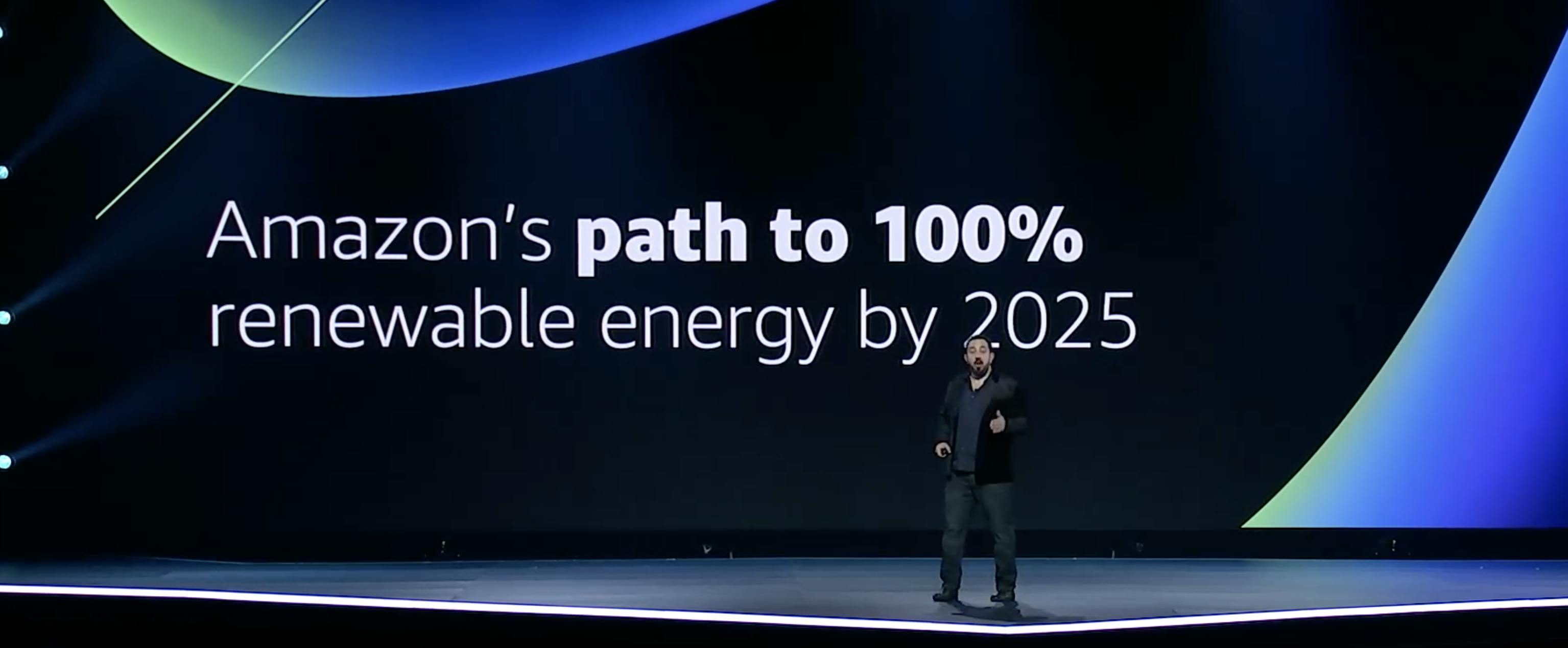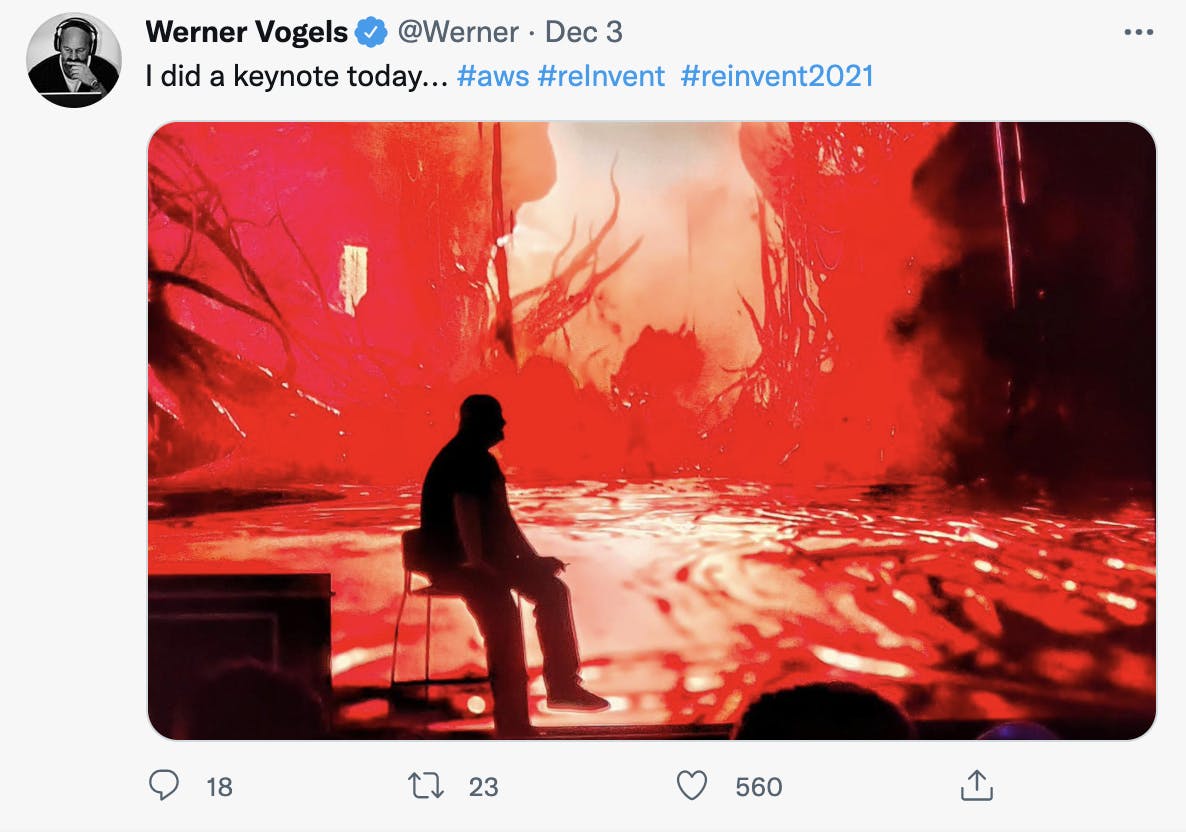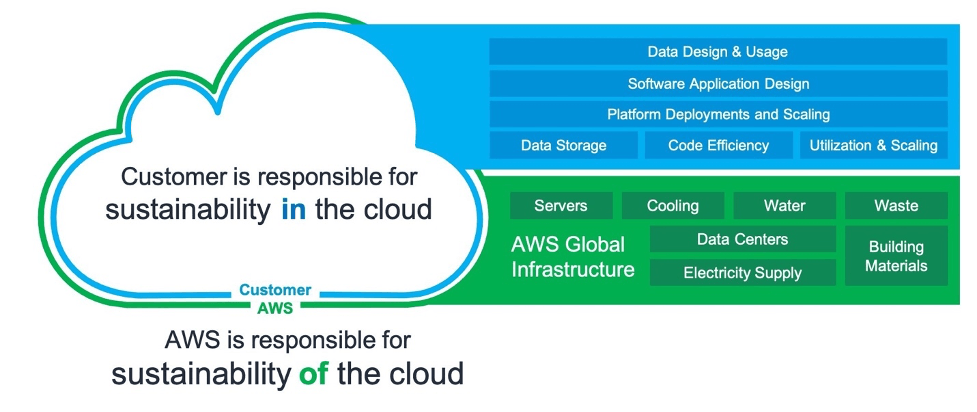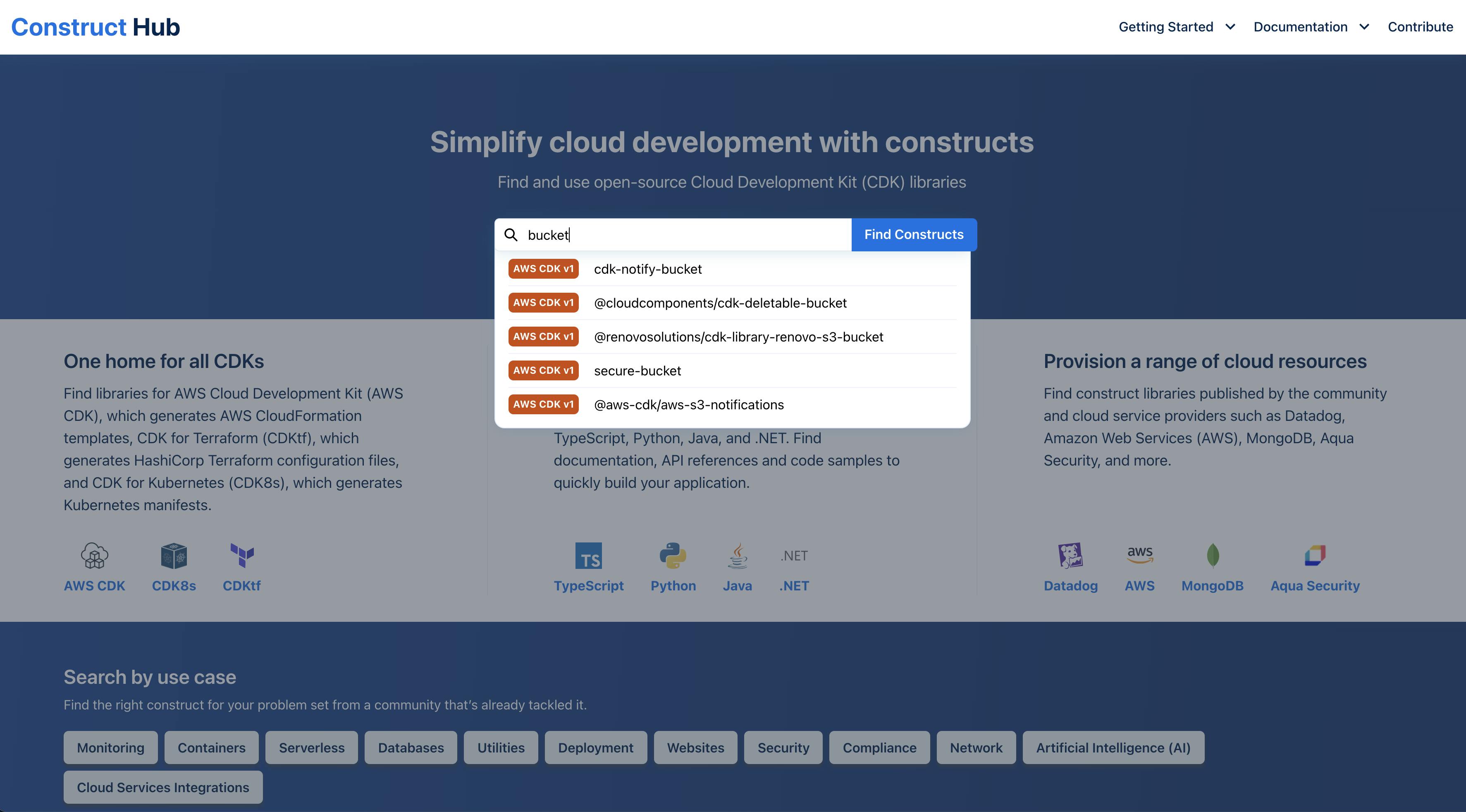As a cloud enthusiast, I like this time of the year. Early December, just before the Christmas holiday, I feel like I am getting presents from my favorite cloud provider with announcements and extraordinary sessions.
This year’s re:Invent was back in Vegas, in-person. Of course, fewer people were on-site because of the Covid measures. I participated virtually and followed all the keynotes, announcements, and leadership & tech sessions. I digested the event, collected my notes and thoughts, then came up with my key takeaways from the keynotes and the announcements:
No game-changer announcements but improvements
I have to admit: my eyes missed Andy Jassy. This year’s event was the 10th, and the first time we didn’t have his usual speech. Instead, the new CEO of AWS, Adam Selipsky, did the main keynote with again high energy and top customer stories. But it lacked any significant announcements.
A reason for this is that we are getting to the point that technology is not new anymore. Instead, it is mature, as this year was the 15th anniversary of AWS. Or it is, as Dr. Werner Vogels said in his keynote, much of the innovation was going on behind the scenes this year, as the company worked to simplify operations for AWS customers.
Let’s go through the key announcements quickly.
Selipsky announced many new services and features: the new Graviton3 chips, C7g instances powered by the Graviton3 chip, EC2 Trn1 instances, Mainframe Modernization service, Private 5g, Lake Formation updates, Serverless analytics for Redshift, EMR, MSK and Kinesis, SageMaker Canvas, IoT Twinmaker, and IoT Fleetwise.
This year’s Infrastructure Keynote, Peter DeSantis, focused on AWS Nitro SSD and Graviton 3, AWS Tranium, and Inferentia Processors. He wrapped up his keynote with sustainability and the climate pledge of Amazon .
 AWS re:Invent 2021 Infrastructure Keynote by Peter DeSantis
AWS re:Invent 2021 Infrastructure Keynote by Peter DeSantis
The next was Dr. Swami Sivasubramanian with Machine Learning Keynote. He announced Amazon DevOps Guru for RDS, AWS Database Migration Service (DMS) Fleet Advisor, Amazon Kendra Experience builder, and new SageMaker features.
Lastly, my favorite one this year was Dr. Werner Vogels’ keynote on the closing day. Amazing intro video, then he started with an Amazon M1 Mac instance and 30 new Local Zones announcements. Then he introduced maybe the most critical networking-related update of the event, AWS Cloud WAN. Finally, some Cloud Development Kit (CDK) love with Matt Coulter. Highly recommend watching this keynote.

You can check Top Announcements of AWS re:Invent 2021 here . But here are my top takeaways from the announcements:
Easier, Better, Faster, Stronger
Although we don’t have a new and shiny service this year that will change our daily work-life, we have many improvements in the background. First, AWS worked on the core infrastructure improvements with chip & instance additions to make our computing resources run faster and cheaper with Graviton3 & Trainium chips and M1 Mac Instances.
We also see AWS is really focusing on networking improvements and even started competing with network and security companies and ISPs. For me, the two most exciting announcements of the event were on the networking topic. The first exciting news was the announcement of AWS Private 5G . AWS primarily focused on software development services in the past, such as S3, SQS, EC2, ECS, Lambda, but currently offering a private 5G networking service. This managed, pay-as-you-go service makes it easy to deploy, operate, and scale your own private cellular network, with all required hardware and software provided by AWS. Of course, it is not for everyone, but it is a fantastic option for some AWS customers.
The second most exciting news is AWS Cloud WAN. With the help of its partners, AWS is offering a Wide Area Network service. AWS Cloud WAN provides an easy way to connect your data centers, branch offices, and cloud resources into a centrally managed network and dramatically reduces operational cost and complexity. Doing this on AWS without a third-party WAN product simplifies networking for many companies that need a WAN solution.
 AWS Cloud WAN — “Easily build, manage, and monitor global wide area networks.”
AWS Cloud WAN — “Easily build, manage, and monitor global wide area networks.”
As we all know, AWS has already accomplished providing cloud services with its infrastructure, and services and in the past couple of years, they moved to bring their services to customers’ on-premise using AWS Outposts . And now they continue with an ‘uncharted’ area: the mainframe. They are working on the mainframe modernization .
Reducing the Complexity
We already are over 200 AWS services, and the number keeps increasing every year. As a result, the cloud is getting more complex, and it is almost impossible to know and use all of them. Because of these, it is crucial to reduce complexity while introducing new technologies.
AWS reduces the complexity by introducing more serverless offerings. This year the focus was the analytics services: Amazon Redshift, Amazon Elastic MapReduce(EMR), Amazon Managed Streaming for Apache Kafka(MSK), and Amazon Kinesis. Some would argue over this, but to me, the increasing number of serverless services is another sign that Serverless is the next “big thing”, especially compared to Kubernetes. Security topic, Secrets Management can be challenging at the beginning. However, the code review tool Amazon CodeGuru now has Secrets Detector to help us. Not a significant feature, but nice to have.
For frontend development with minimal complexity: AWS Amplify Studio , “a visual development environment that offers frontend developers new features to accelerate UI development with minimal coding,” is available. It can be handy for small applications.
And final service to mention reduced complexity, a no-code Machine Learning capability: SageMaker Canvas . This new capability enables people with less technical knowledge to use Machine Learning services.
New Pillar: Sustainability
AWS announced extending AWS Well-Architected Framework by adding a new Sustainability Pillar. Sustainability is becoming one of the hottest topics of the cloud infrastructure industry as we get more and more questions about this topic. I am pleased to see AWS is continuously putting effort into environmental issues and thinking about energy efficiency and sustainability.
As we know, the Well-Architected Framework is a list of questions aiming at different pillars to improve the design, architecture, and implementation of our systems and resources. The new pillar helps customers evaluate their workloads to reduce energy consumption and improve efficiency.
 AWS’s shared responsibility model applies to sustainability
AWS’s shared responsibility model applies to sustainability
Check out the AWS blog post about the Sustainability pillar here . To learn more or to have AWS Well-Architected Reviews for your workloads, you can always reach out to me.
Even Better Developer Experience
AWS has always been developers’ choice when it comes to cloud providers because it offers so much flexibility and ease of use when it comes to its services. AWS, by far, has the best cloud services portfolio to enable DevOps teams in any task. Again this year, many announcements were on improving the developer experience.
The major announcement on the Infrastructure as Code tooling was the introduction of AWS Cloud Development Kit(CDK) Version 2. In addition, we can now use Construct Hub : it is the home of all CDKs; AWS CDK, CDK8s, CDKtf. Both AWS CDK v2 and Construct Hub are currently generally available(GA) . Of course, we already knew about these two for a year, but it is good to see AWS actively promote its new developer tooling. Soon AWS CDK will eclipse CloudFormation and become the new standard. If you haven’t tried a CDK yet, I strongly recommend trying it hands-on.
 ❤ Sharable & repeatable cloud constructs thanks to Construct Hub ❤
❤ Sharable & repeatable cloud constructs thanks to Construct Hub ❤
Another positive news is that AWS offers new SDKs for the Swift, Kotlin, and Rust programming languages. Currently, these SDKs are on the public preview. Interesting note, AWS converted an internal tool to external: AWS re:Post . It is a community tool to find answers, answer questions, and join groups.
After all, it was another excellent learning experience. I am looking forward to the future ones. See you all at the following AWS events!
